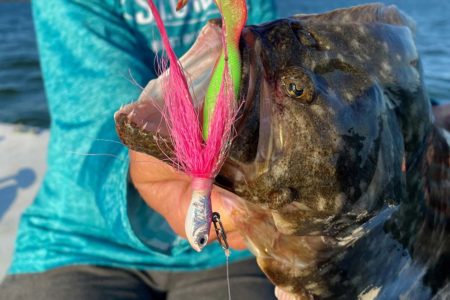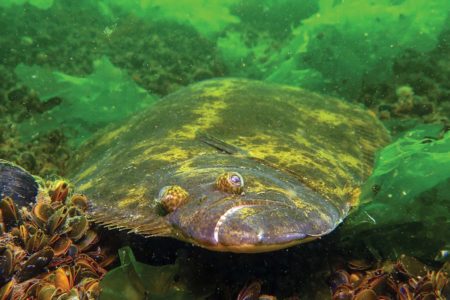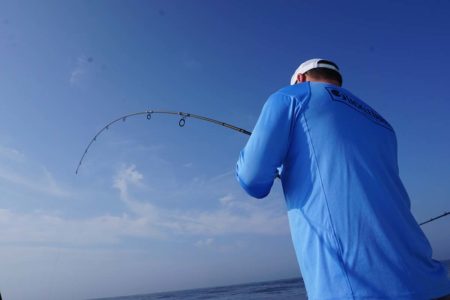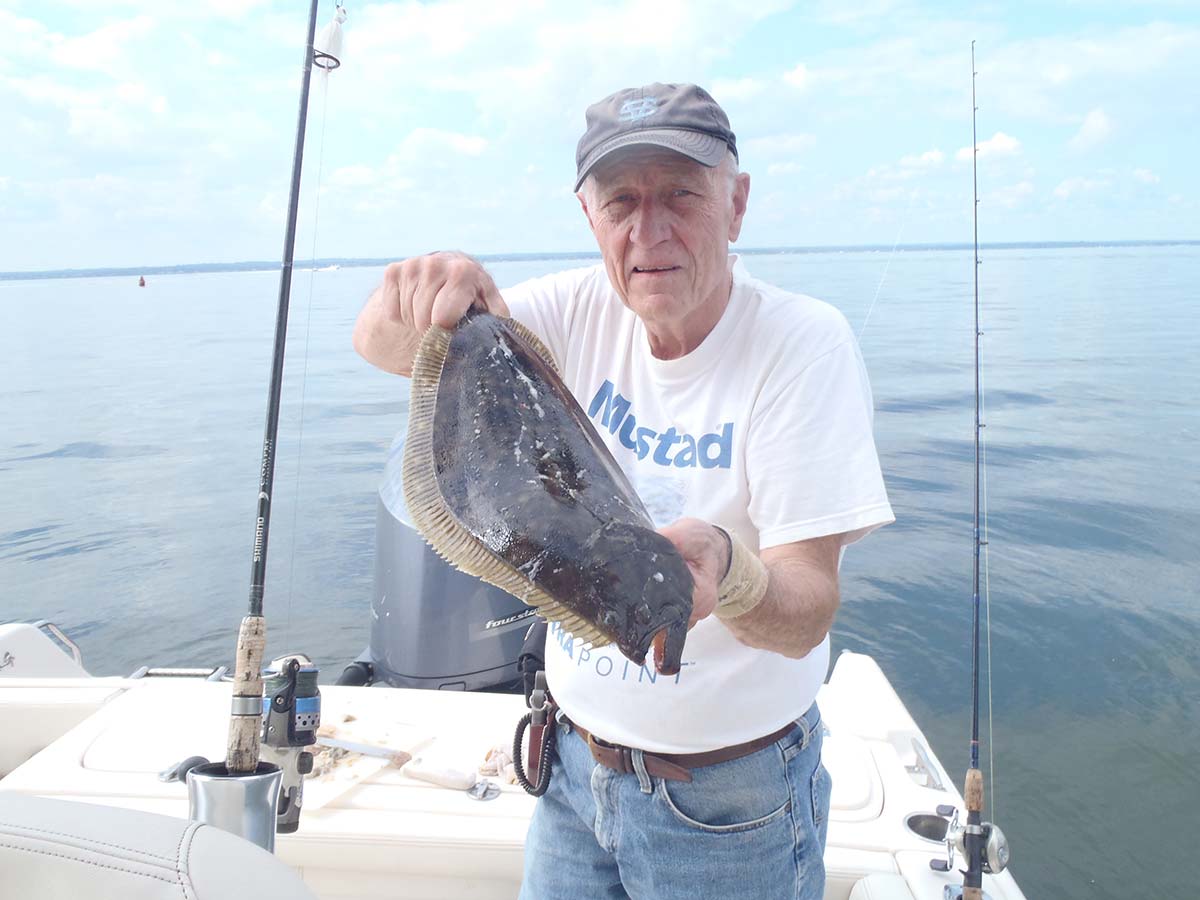
Start early in this North Shore bay for potentially good fluking.
It’s no secret that sand eel spawns have been poor in recent years. We may be on the precipice of a bonanza for 2022, or another bad spawn. We simply will not know until the season starts rolling. Given recent history, it just makes sense not to expect a spectacular sand eel year class. If I’m wrong, my preparations for spring fluke fishing will not have been wasted, rather they will only enhance my trips.
Localized
There almost certainly will be some sand eel schools, even if it isn’t a good year, but the schools will be small and scattered. Now, one of the reasons why we often enjoy big fluke in Smithtown Bay is the influx of squid to feed on the sand eels. Occasionally, there are also good years for mantis shrimp, and big fluke love them, too. The problem with mantis shrimp is that they spend most of their time in their burrows and don’t show on a depth recorder, however sand eels dart in and out of the sand when they aren’t free-swimming at various depths. Bait abundance leads to gamefish abundance and is therefore a key to reliable fishing. I’ve enjoyed a few spectacular days fluking when I found them feeding on mantis shrimp, but more often than not, an angler stumbles on mantis shrimp. Clearly, the sand eel/squid connection is an easier link to locate.
Early, Rather Than Late
Going fluking early can be tricky because of early season weather, and lately they have been cold, windy, and stormy. However, there are always a few calm days, but are you free to fish on those days? Nonetheless, I will say without hesitation that the earlier you get out and find the fluke, the more likely you’ll enjoy a productive outing; not only numbers but size as well.
There is, however, no precise date for the arrival of the fluke. One of the ways that fluke fans maximize their season is to try earlier than everyone else. A good guess will put you on the fish before everyone else, but a bad guess can result in a long day. Frankly, it’s worth a few “zero days” in order to get some before they get picked over. Why? Well, if it’s a great sand eel year this becomes less important, but if the sand eels are less abundant, only a limited number of squid will enter the bay and therefore, with less food, fewer fluke will follow. Continuing this reasoning, it becomes obvious that with fewer fluke and many fluke fishermen, the majority of the keeper fluke will be harvested within a week or so, and that leaves the small ones to frustrate us. Definitely, being one of the early birds on the fluke grounds is a big plus.
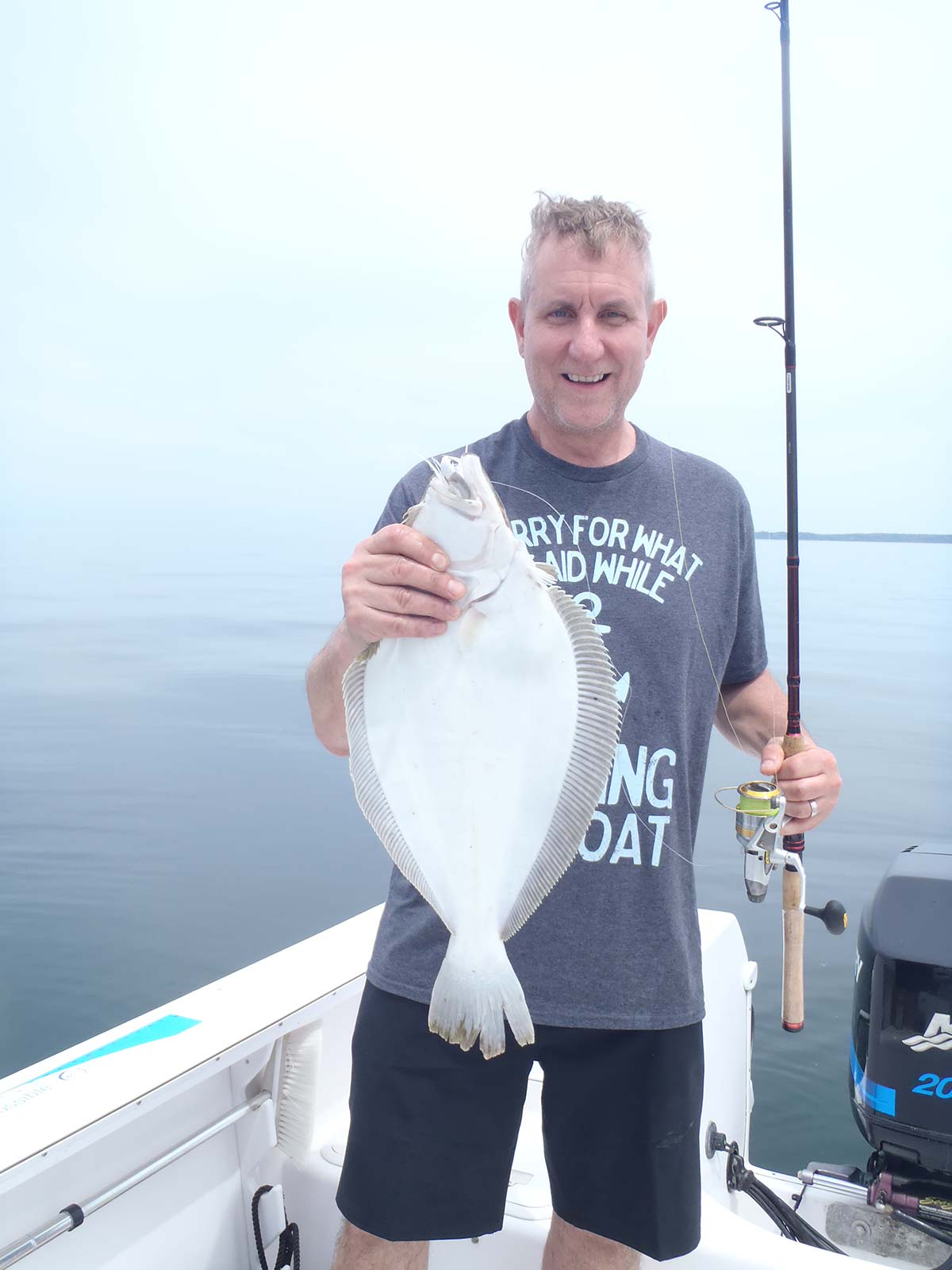
Pick Your Spots
Many fluke fishermen make very long drifts, but I disagree with this approach. Most sections of the bay feature flat even bottom that are not the most productive areas. When bait is less abundant, fluke fishermen need to focus on irregular pieces of bottom and make short drifts across them. There are also rocky reefs that rise off the bottom, these are good spots for big fluke, but it is difficult to avoid snagging bottom on a drift. That’s why few fluke fans do this, but the areas are productive for porgy, sea bass, and blackfish at anchor. Boulder fields are a different story. It is a lot harder to get snagged drifting among scattered boulders with sections of sand between them. Fluke love these spots because they hold bait and because the fluke can hunker down next to a rock and ambush food that swims by. Some of the biggest fluke can be caught drifting in boulder fields, but keep a look-out for rocks.
Find A Spot
Anglers have different ways of finding productive spots and, I suppose, they all work well from time to time. I have my own preferred ways. I begin with charts and look for bottom structures: irregularities in the bottom. I identify a few likely locations based upon past history and the type of bottom formation. I prefer steep ups and downs over gentle ones. Once on the water I use a depth recorder looking for bait. That means, I run to one of my pre-selected spots, slow down and cruise back and forth. If there are no signs of bait, I repeat the process on my next likely spot and then the next until I find slope and bait in the same place. This is where I will drift.
If none of my pre-selected close-in spots show bait, I’ll move out to the drop-off which is roughly 3/4 of a mile north of the shore. In some places this slope is closer to shore and other places farther off. In some places the drop-off begins at around 40 feet and others as much as 60 feet. Once at this slope I again look for signs of bait on my recorder. Yes, I’ve caught fluke on a flat bottom and no bait, but the odds of success are poorer.
I will also confess to you that I sometimes “cheat.” Well, it really isn’t cheating, but it is smart. When all my initial efforts fail, I look around for clusters of boats. A group of party boats is a really good sign that patrons are catching fluke, because the captains know their stuff and will not linger on unproductive grounds. At this point, a question arises. With so many anglers, are there any keepers left? Unlike other predators that may travel miles from one location to another in a day, fluke tend to settle into an area and stay there as long as there is enough food. Once again, this reinforces the value of being out early in the run and first on the grounds each trip.
Finally, I will not spend more than a half-hour on any spot that isn’t producing fluke, even if the recorder shows bait schools on the structure. One, there may not be fluke there, and two, that spot may be a better feeding ground on the opposite tide. Yes, I’ve caught nothing at times, even with bait showing, and then returned on the next tide and caught well.
Short Drifts
I always prefer short drifts over long ones. Unfortunately, I haven’t always fished with anglers who adhered to this approach, and instead would drift for 20 minutes over barren ground. Above, I’ve emphasized the need to find a productive spot, and once you do, work it. Why waste time drifting over the fish, catch a few, and then continue to drift out of the productive zone into barren territory. It makes no sense to me. Most of the time, most of the fluke will be found on the slope: either the up-tide or down-tide slope. Which one depends on how the bait is relating to the structure.
One of the reasons I prefer a short drift is that fluke are predators and, like all predatory fish, are opportunistic. They gather together at and around structure where feeding is easiest, either because that’s where the most food is located, or because small irregularities in the slope provide some turbulence that disorients the bait and makes it easier to catch. With this understanding, why wouldn’t we think of feeding fluke the same way we understand feeding stripers. That is, they group together where the feeding is best. Therefore, once the bites stops, you’re probably out of the fluke cluster. The smart approach is to power-up and repeat the same drift.
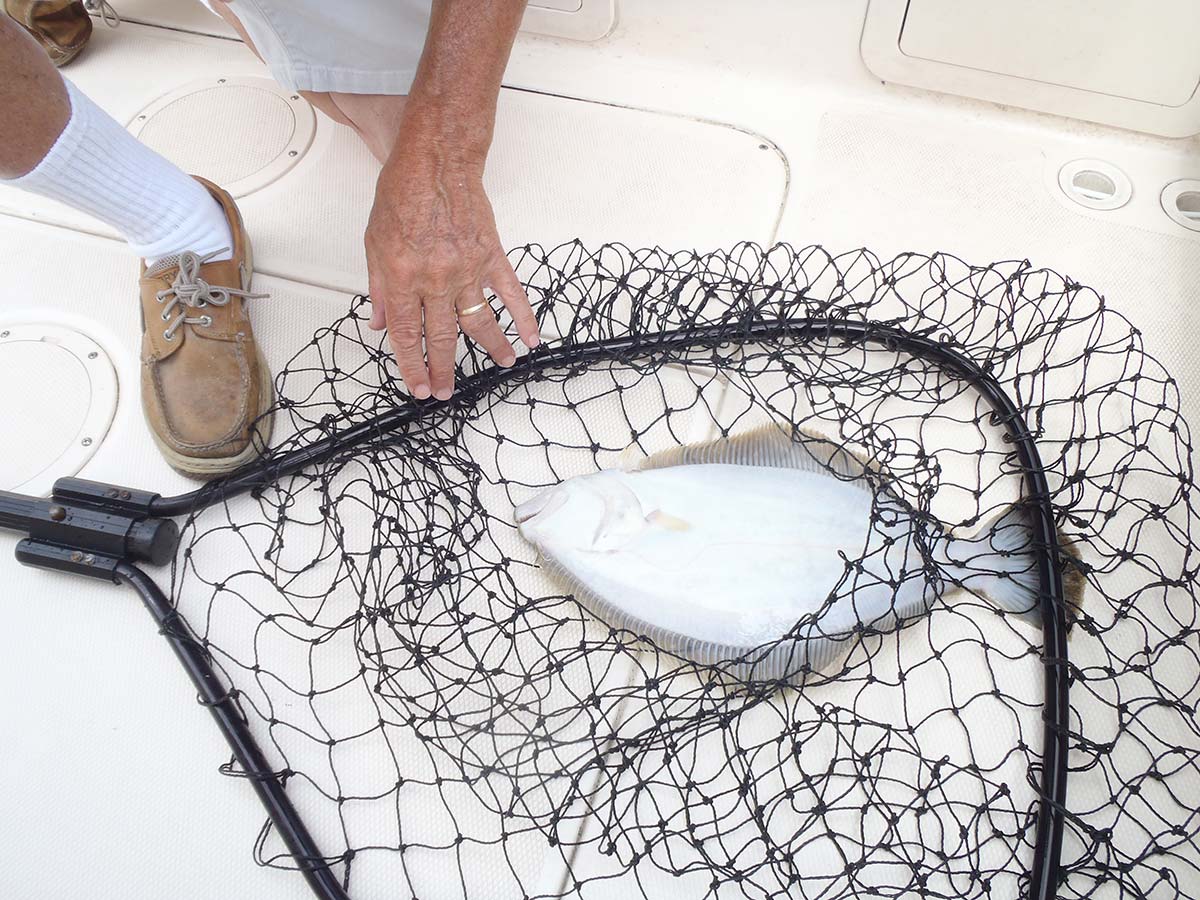
Tackle
I prefer light tackle inshore fishing, as do my sons and my friends. Probably, there are more keeper-size fluke on deep water structures in Long Island Sound, but depth and currents require the use of heavier tackle. Inshore, we use either baitcasting tackle or light spinning tackle. We do not use heavy baitcasting gear such as the ones you see largemouth bass fishermen use when jigging. Rather, the same lightweight gear we use for porgies and blackfish. The same is true of our spinning gear. It is important to match rods and reels for weight and power. If one of the two is not compatible it renders the outfit much more difficult to use.
I spool my reels with 15-pound test braid: either Sufix Performance Braid or Daiwa J-Braid, as do most of my companions. I tie a small 35-pound test Spro swivel to the braid and my leader to the swivel’s other loop. We use mostly bucktails, tie direct to the leader, and add one kind of Gulp or other artificial bait to the hook. Jigging with bucktails is much more fun that dragging a sinker and a baited hook. The hits are harder and the fish fight harder without the weight of the sinker. In short, our tackle is selected to allow us to have the most fun possible. Isn’t that, after all, why we fish in the first place?
Patience Is A Virtue
There have been times when I left the dock and stopped on the first piece of structure I came to, and caught fish. However, sorry to say, this isn’t the norm; especially in bad bait years. If it regularly happens to you, then I tip my hat and make a request that you take me with you. Seriously, most of the time it takes a little hunting and pecking to find a productive spot and we also get skunked now and then.
The idea shouldn’t be focused on instant results, rather ultimate results, and that often takes time, so patience is necessary. However, don’t be too patient. Sharp anglers begin a trip about an hour into the tide (flood or ebb) in order to let current and fish become established. That leaves five hours in the tide. So, with five or six potential locations to test, it is important not to waste time at each location. I try not to let a single fish seduce me into remaining at a place so long that it compromises the opportunity to try other spots. I use the 20 minutes to half-hour approach. That means I check four to five places in two to two-and-a-half hours. That means, if I do get on the fish, I have at least two hours to work the area and catch fish.
In the end, as the saying goes, “the early bird catches the worm.” Start early in the season, and get onto the pieces first, have patience and you just might have a great fluke season.

